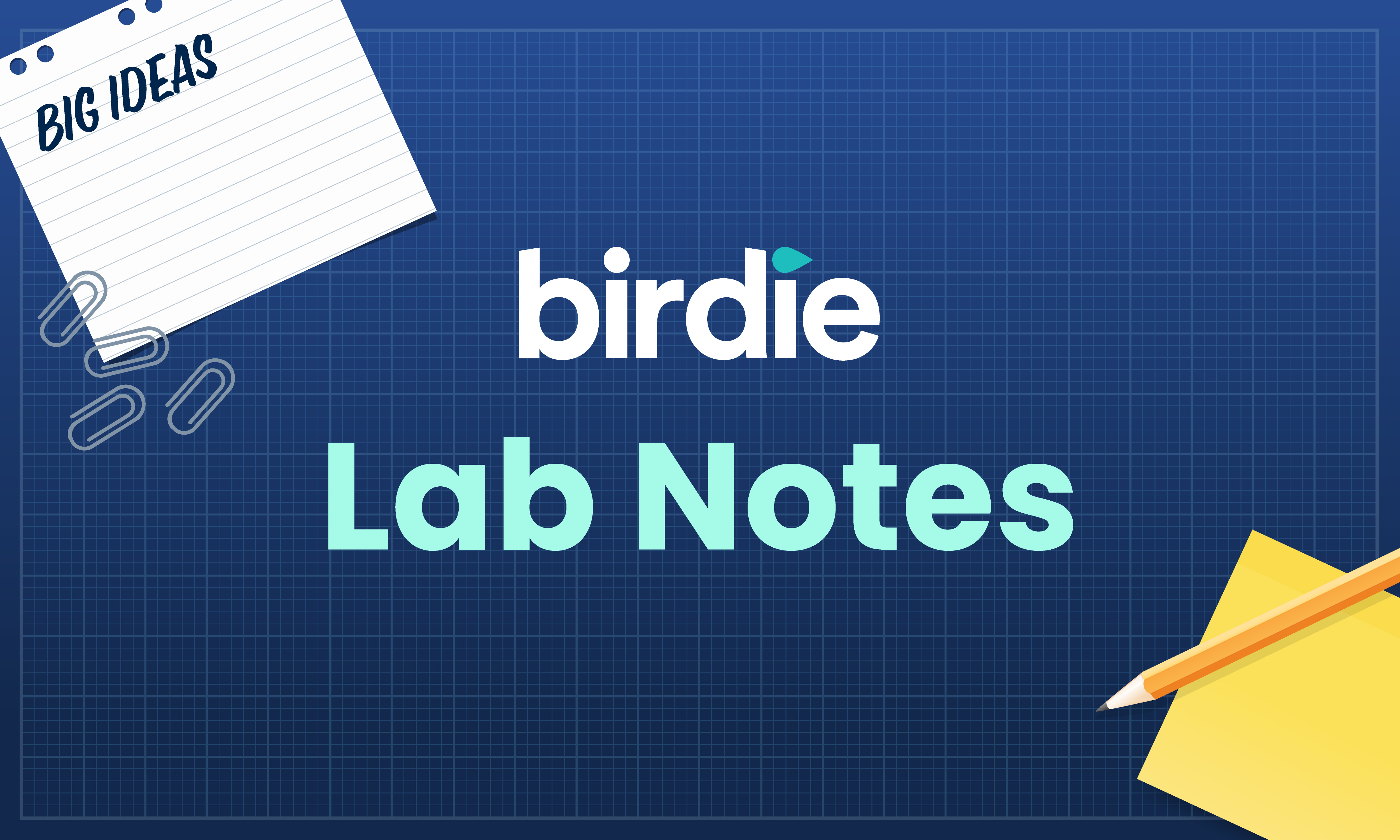Table of contents
An effective care management system is essential for a smooth-running and financially viable home care business. In this new digital era, the right software system transforms businesses - from freeing up time to increasing bottom-line profits.
However, despite this, we know that many UK homecare agencies that use digital products also find themselves repeatedly resorting to paper processes to fill the gaps left when digital tools aren’t comprehensive enough, or too challenging to use. We call this ‘papering over the cracks’.
But what’s the problem? Surely there’s nothing wrong with grabbing a pen and paper every now and then? Not quite so simple…
In this article, we’ll explore what happens when mixing paper and digital systems to ‘paper over the cracks’ can hinder progression, slow down workflows and ultimately, harm the bottom line for homecare businesses.
We’ll also explore how to avoid ending up in this situation in the first place, so your agency doesn’t end up with a potentially complicated and risky digital-and-paper combination.
What leads to homecare businesses papering over the cracks?
The mix of paper and digital often starts in the early stages of a business. For homecare agency owners and managers, the initial priority is getting the agency off the ground and doing whatever it takes to gain momentum.
When a challenge or problem arises, it’s easy to fall back on your usual go-to: pen and paper. It solves the problem in the short term and fills the gaps left by clunky or cumbersome digital tools.
Even when business owners recognise the need for a comprehensive digital solution, trying to find the right one can be a minefield. The digital world can be overwhelming when you’re starting from scratch, and homecare agencies have a litany of processes to account for, from care management to rostering, finance and communication.
All this can lead to the following issues that contribute to a need to ‘paper over the cracks’:
- Care professionals struggling to use web-based care software from their mobile devices while on runs
- Hours every week being taken to type up notes into the system once a care professional returns from a visit
- Body maps are drawn on paper and then photographed and uploaded to digital records
- Rostering being designed for in-office users only, leading to print-outs and text messages to update care professionals who spend their time on the road
…and many more. Many care agencies have become used to accepting this compromise as part-and-parcel of the challenges of running the business, but herein lies two problems.
Firstly, these problems are easily solved. Secondly, failure to address this paper-and-digital mix masks many hidden risks, some of which can have serious consequences, as we’ll discover next…
Want to dig into this further? Please take a look at this article: How to avoid choosing the wrong technology for your homecare agency
The risks of mixing paper and digital solutions
Disjointed data management
Organising and keeping track of essential data becomes extremely difficult when you mix digital platforms with paper documents. Searching between the two, trying to locate information or ensure you haven’t missed anything in either format, is inefficient, frustrating and a waste of time and money. Moreover, it can lead to oversights that could cause administrative nightmares and even jeopardise care quality.
Financial implications and opportunity cost
Although a digital software system costs money, a paper-based system is not without its costs. Printing, storing, and purchasing paper can cost homecare businesses an extra £500 per month (State of Tech in Care, 2021). However, in addition to the physical items, there is also a time cost associated with paper processes. When your whole team is working with inefficient tools, the ‘invisible costs’ can mount up - whether it’s 8 hours a month spent on invoicing or 12 hours a month spent on payroll calculations - every extra hour costs money. This is how Birdie can help manage your finances and team.
Crucially, it also costs opportunity: the time spent on admin is time that doesn’t get invested into the growth of the business. For example, time spent handling typing up notes from a visit could be better spent recruiting to ensure reliable service delivery - or it could be spent marketing for new private clients or applying for new tenders. Speaking of Council Tenders, check out the ultimate guide to winning council tenders.
Compliance and auditing complexities
Meeting compliance and auditing requirements become so much more complex when you’re juggling paper and digital systems. Double the processes, double the workload. With homecare agencies already spending hours on monitoring and reporting, this additional work really has a knock-on effect on time and costs.
The Care Quality Commission (CQC) states that a good digital records system has far more benefits than a paper-based record system. Digital systems can track changes made to records, providing you with a clear audit trail. This helps ensure the integrity and authenticity of the data, which is crucial for compliance and accountability - and difficult to achieve with paper records.
Many digital systems also have reporting features that allow for easy generation of compliance reports for inspection purposes, helping you achieve confidence and excellence at your next inspection. Take a look at Birdie’s auditing features for reference.
The CQC lists several other benefits of a good digital records system, including:
- Risks such as medication errors, dehydration or missed care visits will be minimised.
- Staff will be able to do their job more effectively and efficiently.
- People’s information will be handled more securely through automatic back-up of data, the cyber security of cloud-based services, and by using multi-factor authentication.
When it comes to CQC inspections, the downsides of a mixed paper and digital system really hit home. If inspectors decide that your processes are not up to scratch, you could get downgraded or, if the CQC feels it is serious enough, deregistered or shut down.
Looking for more ways to prepare, execute and win when it comes to the CQC? Take a look at our new CQC course (it’s free and only takes 1 hour to complete).
Increased risk of drug errors
Mixing paper and electronic systems for medicines management creates confusion, miscommunication, and, in the worst case, drug errors. Ineffective medicines management systems not only pose a risk for care recipients and care professionals, but they also attract serious consequences from the CQC. Over half of the 237+ million drug errors made every year in England happen at the point of administration (State of Tech in Care, 2021). Mixing paper and digital processes only increases the risks of these errors occurring in your agency.
For more information on this we suggest you take a look at this article: Management of Medication.
Impact on team productivity and morale
Managing dual systems creates more work, and when everyone feels like they’re battling with inefficient processes, it has a knock-on effect on the productivity and morale of the whole team. Given that the staff turnover rate in social care businesses - in 2022 was at 29%, according to industry statistics, this causes real challenges for a lot of home care agencies. Keeping your team informed, connected and feeling valued is vital, this is how Birdie works to support this goal.
Training new members of staff on multiple systems, processes, and platforms is time-consuming and often overwhelming. In contrast, having one streamlined approach to care management in an all-in-one digital platform will reduce confusion in onboarding and allow time to be freed up for new starters to settle into their role and get to know their colleagues and care recipients. Some software platforms even provide training to teams and care professionals on how to use the platform, taking that pressure away from you and your team.
Difficulty staying connected with families
Family members often report feeling out of the loop when they can’t access regular updates on their loved one’s care. Communication typically happens via telephone, which takes up time and can easily end up going off track instead of sticking to the essential information.
Comprehensive digital systems solve this problem by taking all communication online. You can share regular updates, which family members can see at a glance and respond in the same format if they wish. When families can play a more active role in their loved one’s care, stay informed about their well-being, and collaborate effectively with care providers, the care recipient often experiences improved outcomes and quality of life. Offering digital communication undoubtedly opens up more business opportunities for care providers.
Top tip: Look out for a provider who has a dedicated family app!
Mixing paper and digital processes may seem convenient or necessary at the moment, particularly when your software has limitations. However, the reality is that any short-term benefits are negated by the long-term challenges created through every thread of the business.
There is no doubt that efficiency, effectiveness and sustainability are all hampered by mixed processes. The hours lost, the additional complexities in auditing, and the impact on staff morale - these are all just the tip of the iceberg.
Systems and processes are the backbone of any homecare business. For companies to thrive, adopting an integrated digital solution that genuinely replaces the need for paper becomes not just an option but a necessity.
Key Takeaways
- Mixing paper and digital solutions creates complexities and inefficiencies in data management, auditing and compliance, time and finances, which creates headaches, damages care quality and costs your business valuable time better spent elsewhere.
- There is no better time for homecare agencies to migrate to fully integrated, powerful digital systems that genuinely eliminate the need for paper records.
- Adopting such a system will overcome challenges in several areas of the business and positively impact the short and long-term health of the company.
Exciting news! Birdie has launched a tool that could redefine your agency's financial strategy: Birdie's Homecare Agency Cost Benchmarking Tool.
This tool taps into industry-wide data to provide insights into your agency's spending, profit margins, and areas for potential savings. Ever wondered if you're over-spending or missing out on opportunities to save? This tool will give you answers by analysing key metrics to reveal how your agency compares to others in the industry.
Ready to take control of your agency's financial health? Dive into Birdie's Homecare Agency Cost Benchmarking Tool now! It's quick, easy, and completely free.
Published date:
November 7, 2023
Author:
Bella Turner


















.svg)